Over One Hundred Nuclear Fuel Particles Removed
22nd August 2009
More than a hundred fragments of spent nuclear fuel were removed from the seabed in the latest phase of work to clean up and shut down the former nuclear research site at Dounreay.
The particles were detected and retrieved by a remotely-operated vehicle that systematically scanned an area of seabed equivalent in size to more than 10 football pitches.
The robotic system recovered 115 particles during the two-month operation. Of these, 29 were in the higher hazard category defined by independent experts as a "significant" threat to health.
Another 16 suspected fragments detected by the ROV also gave readings in this category but were not retrieved. Six could not be targeted accurately for retrieval and 10 were buried deeper in the sediment than the 45cm reach of the ROV retrieval system.
Monitoring of local beaches was carried out during the seabed clean-up. A total of 15 particles, none of them "significant", were detected and retrieved onshore since seabed clean-up started on June 1. Of these, 14 were removed from local beaches.
Two small areas of elevated radioactivity were detected during a survey of land adjacent to the site and zoned for development as a low-level waste disposal facility. One of these contained a "minor" particle. Both areas were excavated and this survey is continuing.
Dounreay clean-up contractor DSRL reported all the finds to the Scottish Environment Protection Agency. The results will also be considered by the Particles Retrieval Advisory Group, a body of independent experts set up to advise DSRL and SEPA.
The offshore clean-up is the implementation phase of a major study carried out with public consultation to identify the best practicable environmental option to address a legacy of discharges from the former research site.
This summer's work focused on an area at the west of the main particle plume on the seabed. The plume maps were produced by Dounreay Particles Advisory Group, a body of independent experts, and based on the results of studies and detailed statistical analysis. The maps indicate that the most radioactive particle remnants are located in this area, where fishing is prohibited.
Phil Cartwright, particles and contaminated land manager at DSRL, said: "This was the first full phase of seabed clean-up following a demonstration last autumn of the detection and retrieval technique.
"The area targeted was discussed with the Scottish Environment Protection Agency and Particles Retrieval Advisory Group and provided a range of challenges to the detection equipment. The information we gained will assist DSRL to develop the best way forward for this project and by SEPA and PRAG to consider the effectiveness of the retrieval technique and if the plume map needs to be changed. The retrieval of 115 particles, with total radioactivity of 500 million becquerels (of ceasium-137) is a positive start to the seabed clean-up."
Related Businesses
Related Articles
TAE Technologies and UKAEA partner to commercialise fusion tech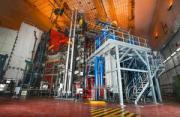
Joint venture to develop neutral beams for fusion and non-fusion applications, creating high-skilled jobs and establishing a critical supply chain. TAE Technologies, a leading US private fusion energy firm with over 25 years at the forefront of scientific innovation, today announces a bilateral and reciprocal investment commitment with the United Kingdom's national fusion laboratory, the UK Atomic Energy Authority (UKAEA) to commercialise TAE's proprietary particle accelerator technology for the global market.
Buried Hazards, Unfinished Business - What the NDA's 2025 Progress Report Really Tells Us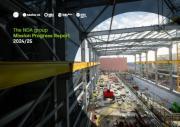
The Nuclear Decommissioning Authority (NDA) has released its 2025 Mission Progress Report is a slightly sprawling document chronicling one of the UK's most complex environmental undertakings. The safe dismantling of its early nuclear legacy.
New recruit officers join the Civil Nuclear Constabulary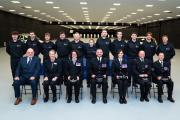
The Civil Nuclear Constabulary (CNC) welcomes its newest recruits. The CNC hosted two passing out parades for the graduating Authorised Firearms Officers (AFOs) of Initial Foundation Programme (IFP) 106.
Dounreay's next generation of talent honoured by apprentice award
Nuclear Restoration Services Dounreay's Kate Thomson has won Modern Apprentice of the Year at the Highlands & Islands Apprenticeship Awards in Inverness. Kate, who is in the second year of her apprenticeship in commercial and quantity surveying, said she was thrilled by the honour.
Taskforce calls for radical reset of nuclear regulation in UK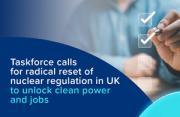
Nuclear Regulatory Taskforce publishes final report and calls for radical reset of overly complex nuclear regulatory system. An overly complex nuclear regulatory system has contributed to the "relative decline" of the UK's ability to deliver faster and cheaper nuclear projects.
Funding approved for Wick Harbour port consultant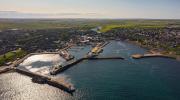
A specialist ports consultant has been appointed to develop a long-term strategic plan for Wick Harbour Authority (WHA) in Caithness. WHA has secured £47,775 from Highlands and Islands Enterprise (HIE) and the Nuclear Restoration Services, NRS Dounreay towards the cost of the services.
Fallon Campbell From Melvich Near Thurso Named As Apprentice of the Year At Awards In London
Rising star from North Scotland honoured at event to celebrate brightest and best in industry. An electrical apprentice from North Scotland is celebrating after being recognised for her contribution to industry at the 13th annual Engineering Construction Industry ECI Training and Development Awards in London.
The NDA Group Graduate Programme: more than a job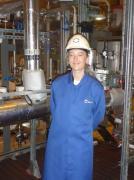
The NDA group graduate scheme offers far more than just a stepping stone into the nuclear industry; it's a chance to grow professionally, explore new places, and become part of a supportive community. Nuala Ledward, Assurance and Performance Graduate, shares how her secondment to Dounreay brought these benefits to life.
UKAEA develops 3D printing for fusion components
At its recently opened Central Support Facility (CSF), UKAEA has commissioned an electron beam additive manufacturing machine that can be used to incorporate tungsten into components, alongside a selective laser manufacturing machine. Fusion can play a key role in a global low carbon energy future.Advancing Fusion Remote Maintenance: Industry Collaboration Driving Innovation
As part of the Fusion Futures (FF) programme, UKAEA's Remote Applications in Challenging Environments (RACE) has partnered with industry leaders to develop two groundbreaking technologies for remote maintenance in fusion energy engineering. Thanks to FF funding, industry has taken the lead in maturing UKAEA technology concepts—delivering real-world solutions that enhance operational autonomy and reduce maintenance burdens in extreme environments.
